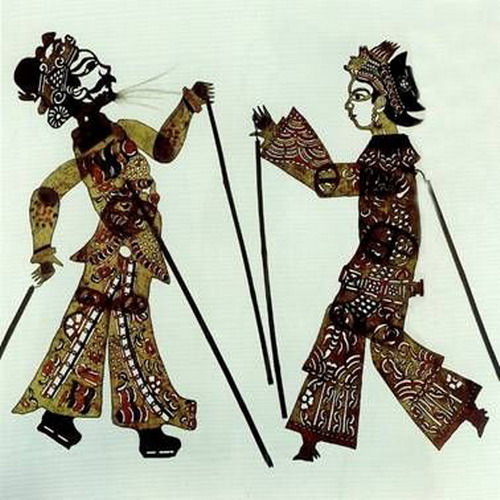| About Hubei | Culture & Arts | ||
| Attractions | Routes | ||
| Dining | Shopping | ||
| Hotels | Transportation | ||
| Entertainment | Travel agencies |
Jingshan to attract Wuhan tourists
Storytelling queen
For the love of Wuhan
Dangyang to promote tourism


Leather-silhouette show
Updated: 2011-12-29
The leather-silhouette show can be dated back to the West Han Dynasty about 2,000 years ago. It is also known as the sheep skin play, head play and shadow play. It originated in Shaanxi, northwest China. It matured in Shaanxi, Shanxi and Henan during the Tang and Song dynasties and prospered in the Hebei during Qing Dynasty.
Just as the name implies, the leather silhouette is made of leather materials. For solidity and transparency, leather silhouettes prefer cow leather and donkey leather. It is colored with red, yellow, blue, green and black.
The special materials allow the leather silhouette figures and stage properties to glitter when projected by backlights onto the screen. Following traditional Chinese opera patterns, leather silhouette figures are classified into the five categories of male lead, female lead, supporting male lead, supporting female lead and jester.
 |
| Leather-silhouette show |
More specifically, each character is comprised of 11 joined parts for the head, upper body, lower body, two legs, two upper arms, two lower arms, and two hands. The performer controls the main pole in front of the character’s neck and two playing sticks at the ends of the two hands. This enables the character to make all sorts of movements and actions.
In China, many local operas derive from the leather-silhouette show. The screen-based performance and performing measures of the leather-silhouette show have guided the invention of modern films and development of modern cartoon films. To date, Chinese leather silhouettes have been collected by museums in many countries. It is an excellent gift the Chinese government exchanges with foreign state leaders. This shows that the leather-silhouette art has high artistic values in China and the world at large.
The leather-silhouette show is a folk culture created by peasants in mountainous areas to redeem vows to gods and celebrate harvests. The leather-silhouette is a pattern art, produced with a large piece of donkey skin, coated with colors to vividly display diversified characters and sceneries.
The performers of leather-silhouette show light up an engine oil lamp and hold up the leather silhouettes to enter on the stage behind the screen. The images of the leather silhouettes are projected by the strong lamplight on the white cloth. The performers dance and sing historical stories. The performance is accompanied by five musical instruments, which are the xylophone, gongs, bamboo flute, drum (one drum, two-faced drum, and two sets of drums), and striking bells.
Leather-silhouette shows are performed by local peasants. The audiences and performers share common feelings and interests and so the characters of the shows are loved by the mountainous people.
In Baokang, the leather-silhouette show has been popular for hundreds of years. It has gradually retired from the world in modern days as other cultural entertainments grow. Nowadays in rural areas, the leather-silhouette show is occasionally performed during festivals. In recent years, the Beijing Film Studio, China Central Television, Shanghai Television, and Hubei Television have come to Baokang county to cover the leather-silhouette show.